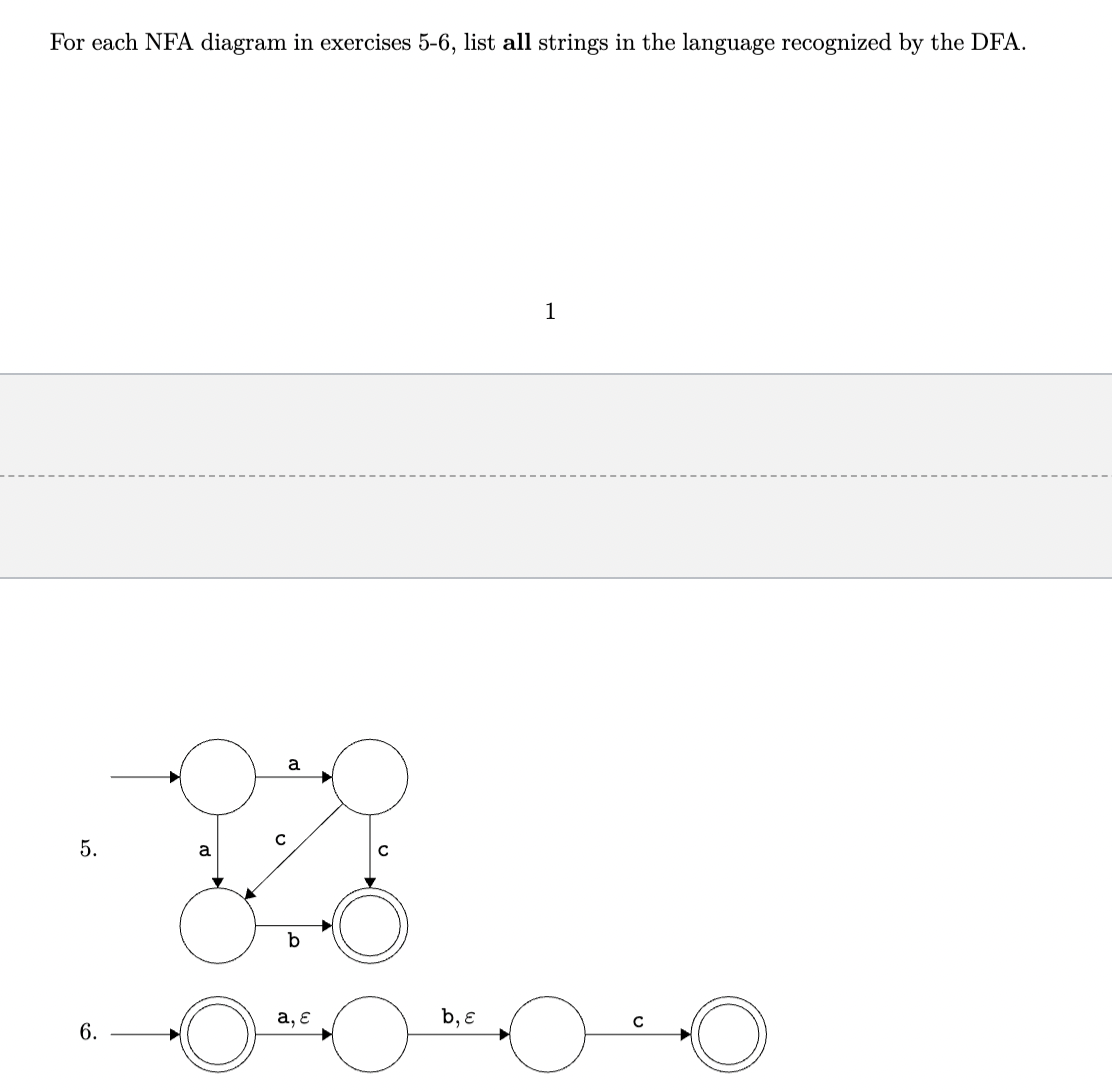Home /
Expert Answers /
Computer Science /
for-each-nfa-diagram-in-exercises-5-6-list-all-strings-in-the-language-recognized-by-the-dfa-pa800
Expert Answer
To convert a non-deterministic finite automaton (NFA) to a deterministic finite automaton (DFA) and list all the strings recognized by the DFA, you can follow these steps:1. Identify the NFA diagram representing the language.2. Convert the NFA to a DFA using the subset construction algorithm. This algorithm creates a DFA from an NFA by representing each state in the DFA as a set of states from the NFA.3. Once you have the DFA, you can traverse it using a depth-first search (DFS) algorithm to generate all the possible strings recognized by the DFA.Here's a step-by-step guide to accomplishing this:Step 1: Convert NFA to DFA- Start with the initial state of the NFA and create the corresponding initial state of the DFA, which is the epsilon closure of the initial state.- For each state in the DFA, determine the possible transitions by considering all possible input symbols.- For each input symbol, find the epsilon closure of the resulting states after transitioning from the current state.- Repeat the above step for all states and input symbols until no new states are generated.- The resulting set of states in the DFA represents the language recognized by the NFA.Step 2: Traverse the DFA to generate strings- Start with the initial state of the DFA.- For each transition from the current state, recursively explore all possible transitions by consuming the corresponding input symbol.- Keep track of the current string being built while traversing the DFA.- Whenever you reach an accepting state in the DFA, add the current string to the list of recognized strings.- Continue the DFS traversal until all possible paths have been explored.By following these steps, you should be able to convert the NFA to a DFA and generate a list of all strings recognized by the DFA. Keep in mind that the complexity of this process increases exponentially with the size of the automaton, so it may not be feasible for very large automata.
